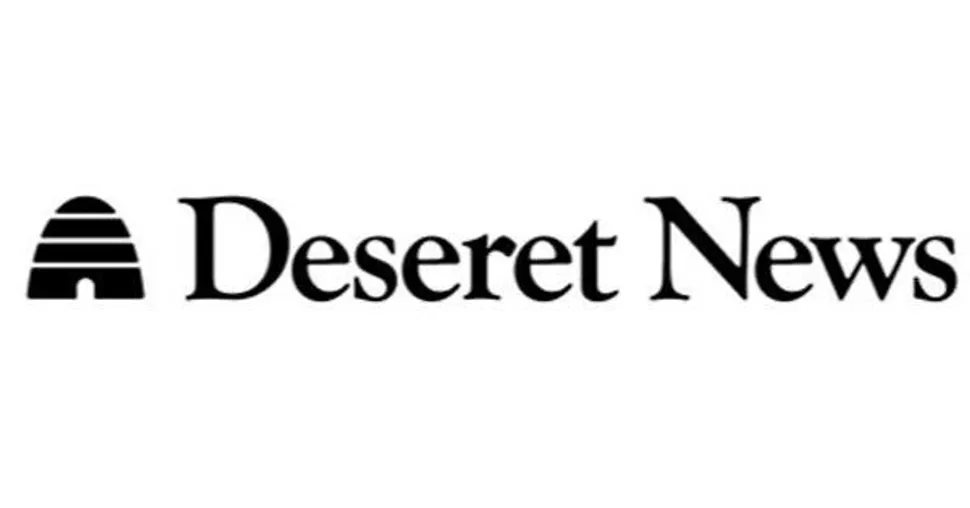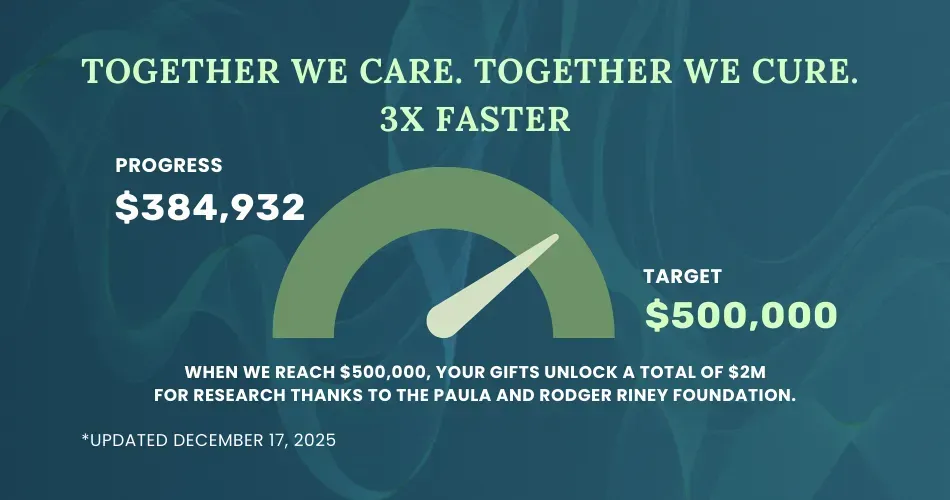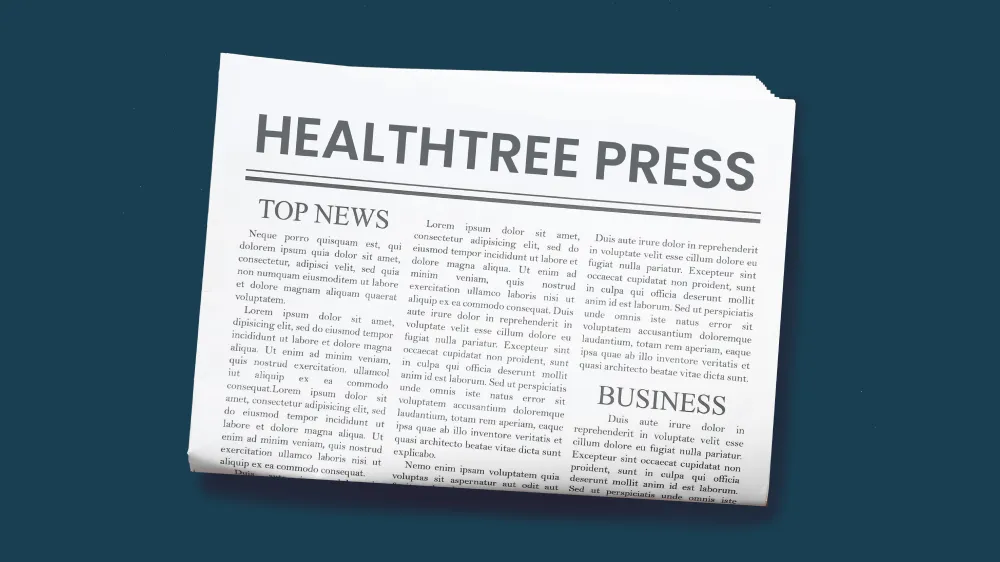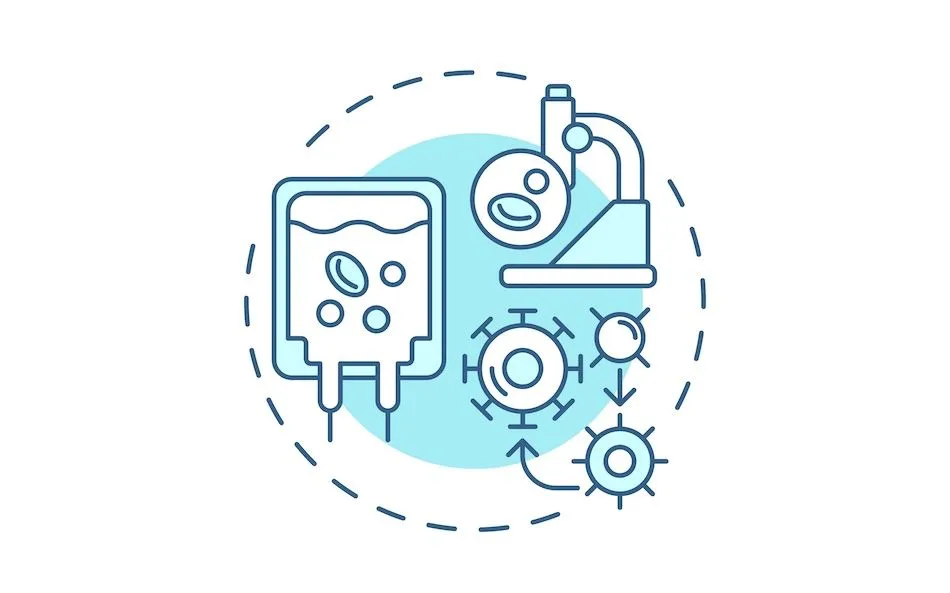Deseret News: How a cancer survivor turned a bad diagnosis into life-changing work


Jenny Ahlstrom, myeloma survivor, relaxes at home with her husband Paul in Sandy on Friday, June 29, 2018.
Kristin Murphy, Deseret News
With her family by her side, Jenny Ahlstrom has spent 11 years pushing far beyond the confines of her comfort zone, learning skills and undertaking challenges for which she never felt prepared. At 54, the Sandy, Utah, wife and mother of six hopes she’ll have years more to experience new firsts.
That dream started with cancer.
The Ahlstrom family had moved to Mexico, where her husband, Paul, an entrepreneur and startup expert, had been asked to help create a venture capital industry. While on vacation back in the United States, she saw a doctor about physical complaints she’d pushed to the background during the busy, exciting time.
The news was devastating: She had holes throughout her spine and pelvis — probably cancer.
Specialists soon provided a name. The then-43-year-old had multiple myeloma, a relatively rare form of blood cancer that typically strikes people in their 70s. Back then, few lived longer than two years.
She spent the next six months in America undergoing tandem stem cell transplants using her own healthy cells, while family and friends rallied so Paul and the kids could stay in Mexico. He traveled back and forth to be with her when she was sickest. Then she moved back to Mexico and traveled periodically to Houston for treatments. After months of that, they moved back to the United States.
Somewhere in that chaos, they decided to approach the cancer diagnosis like a startup company and create something unique, a foundation to see if they could help researchers find a cure using a database platform and software suite they call HealthTree. The myeloma portion is MyelomaCrowd by HealthTree and they plan to add coverage for other diseases, like acute myeloid leukemia.
Deseret Magazine asked Jenny Ahlstrom what she’s learned about building resources for patients and researchers and if a potentially deadly disease can bring welcome lessons.
Deseret: What made your family tackle this so differently?
Jenny Ahlstrom: My brother-in-law David was diagnosed with acute myeloid leukemia six years prior to my diagnosis. He lived a year, and it was a terrible year. Everybody jumped in to help — we were helping fix his house so he could come back, we were helping in his care, we were sitting by him in the hospital because his medication gave him hallucinations. We were all in but we weren’t all in in the right way, I think. We didn’t know how to navigate it.
A cancer like acute myeloid leukemia is a panic attack and your life changes and all of a sudden you’re in the hospital permanently. ... There wasn’t a lot we could have done for him, because they just didn’t have many treatment options, but we learned the hard way that you have to have a specialist on your team and educate yourself about everything.
We learned to be proactive, that we probably had skills that could contribute to better research. We went hyper patient advocate when I was diagnosed.
Deseret: How have you helped change the way multiple myeloma is treated?
JA: When I was diagnosed, it was like, as a patient this is what I need: I need a specialist. I need ways of getting up to speed on this disease im- mediately. I might need a coach or mentor.
Myeloma comes and goes. You’re constantly making decisions about your care. It’s like a chess game with your life. You have to be strategic about the things you choose, when you do them, how you do them.
With my brother-in-law, he tried an off-label drug during his care that bought him six more
months. We realized that information was lost to other patients globally. The drug he tried was approved 14 years later for his indication; that’s how slow research works. We said, “What can patients do to speed things up?” A lot of tech companies said, “Give us all your health data and we will do something cool with it later.” But that’s a massive trust issue.
We had this hypothesis that if we built a tool like this and invited a trusted patient community that we built to participate, they would. And they did. We did a 50-city tour in 2018 with a prototype and visited with over 860 myeloma patients. Our four boys sat next to elderly people and worked with them on their computer to enter their data to see where barriers are.
The biggest questions were who are you, why are you doing this and what are you doing with my data? We overcame those objections because we were myeloma patients ourselves. We were doing it to accelerate a cure; we don’t sell data or information, which would destroy trust.
Deseret: Tell me about HealthTree.
JA: HealthTree is the new name of our foundation; it was already the software tool we created under my nonprofit MyelomaCrowd. To avoid confusion, we’re transitioning everything under HealthTree branding. It helps multiple myeloma patients find treatments and pushes research for a cure using crowdsourcing.
HealthTree is like a patient data portal where you get tools to navigate your disease and can accelerate research at the same time. No one’s done this before. This is a lifetime relationship with the patient. We show personalized treatment options ranked in order of how myeloma experts would potentially treat them. We built logic on the back end with the help of myeloma experts — 25 contributed — so we can show clinical trials you are personally eligible to join. Instead of 450, you have maybe 50 or 30 relevant to you.
We’ve aggregated patient-reported outcomes so you can see what to expect for side effects. Patients can contribute what helped theirs and we can say 95 patients tried this and it worked 86% of the time. We have built in a researcher portal so we can post survey and study questions from academic researchers for free. We’re trying to accelerate the pace of research and help researchers develop new hypotheses.
Next year, we’re building the researcher portal side where they can submit a question and see raw data come back in a more formal way. We’ve done several pilot studies, like a COVID study, where we had 1,100 patients recruited in four weeks. In any academic study, but especially with a rare disease like this, that’s shocking.
What’s unusual is that we have tech expertise, and we really looked at my disease like we would a startup because my husband has a lot of startup experience. I wasn’t scared of tech because I had worked at IBM and had that background. We said we don’t know how to do this, but we’re gonna figure it out. Now we have a software suite, a coaching portal and a health care university portal. We have a curriculum and 100 myeloma experts who contributed.
Some experts say, “Don’t be a Google doctor.” You know what? That’s where patients are going. You might as well give them accurate, up-to-date resources. Our myeloma coaches are volunteers who have helped over 900 patients so far in a pretty new program. We have a news platform so patients can stay up to date, but in patient-friendly terms. We have a podcast and live meetings.
Deseret: What have you learned from having multiple myeloma?
JA: It’s never fun to have a terminal disease, but I learned that it’s super fun to serve other people. I love doing the advocacy work; it helps me manage my own situation in a much better way. I love helping people who are in a time of life when they’re struggling really significantly. I’ve learned to be more forward and brave.
It’s become kind of our family business. Some of our kids help with video production on the university side and other things for the foundation. That’s been really fun. It’s a win-win for everybody. Patients have never been given the tools to participate in research, or to navigate their disease.
Deseret: What lesson has impacted you most?
JA: It made me recognize the need for a sense of purpose in life. If you don’t have a core sense of why you’re here and what you’re supposed to do while you’re here, you have a harder time living this life.
I think everything we’ve tried has been something I thought I couldn’t do, but have done. I started building out the website in the beginning. I didn’t know how to do that. I had never hosted a podcast before. I had never created a coach program before. I had never been a product manager of a software tool before. We found great people to help us do things. And marketing/PR skills I didn’t think I would need after I got them at BYU? I use them all the time.
Deseret: Any last words?
JA: I would just say that you can use bad things for your good. Regardless of what happens in your life, it can become a positive. I wish I had a more poetic way of saying that. I don’t really care about small inconveniences anymore. Or small irritations. I look at the bigger perspective and how can we make great change in our world.
I think cancer has made me brave and has allowed me to try to do things I would have never, ever tried before.
This story appears in the December/January issue of Deseret Magazine. Learn more about how to subscribe.

Jenny Ahlstrom, myeloma survivor, relaxes at home with her husband Paul in Sandy on Friday, June 29, 2018.
Kristin Murphy, Deseret News
With her family by her side, Jenny Ahlstrom has spent 11 years pushing far beyond the confines of her comfort zone, learning skills and undertaking challenges for which she never felt prepared. At 54, the Sandy, Utah, wife and mother of six hopes she’ll have years more to experience new firsts.
That dream started with cancer.
The Ahlstrom family had moved to Mexico, where her husband, Paul, an entrepreneur and startup expert, had been asked to help create a venture capital industry. While on vacation back in the United States, she saw a doctor about physical complaints she’d pushed to the background during the busy, exciting time.
The news was devastating: She had holes throughout her spine and pelvis — probably cancer.
Specialists soon provided a name. The then-43-year-old had multiple myeloma, a relatively rare form of blood cancer that typically strikes people in their 70s. Back then, few lived longer than two years.
She spent the next six months in America undergoing tandem stem cell transplants using her own healthy cells, while family and friends rallied so Paul and the kids could stay in Mexico. He traveled back and forth to be with her when she was sickest. Then she moved back to Mexico and traveled periodically to Houston for treatments. After months of that, they moved back to the United States.
Somewhere in that chaos, they decided to approach the cancer diagnosis like a startup company and create something unique, a foundation to see if they could help researchers find a cure using a database platform and software suite they call HealthTree. The myeloma portion is MyelomaCrowd by HealthTree and they plan to add coverage for other diseases, like acute myeloid leukemia.
Deseret Magazine asked Jenny Ahlstrom what she’s learned about building resources for patients and researchers and if a potentially deadly disease can bring welcome lessons.
Deseret: What made your family tackle this so differently?
Jenny Ahlstrom: My brother-in-law David was diagnosed with acute myeloid leukemia six years prior to my diagnosis. He lived a year, and it was a terrible year. Everybody jumped in to help — we were helping fix his house so he could come back, we were helping in his care, we were sitting by him in the hospital because his medication gave him hallucinations. We were all in but we weren’t all in in the right way, I think. We didn’t know how to navigate it.
A cancer like acute myeloid leukemia is a panic attack and your life changes and all of a sudden you’re in the hospital permanently. ... There wasn’t a lot we could have done for him, because they just didn’t have many treatment options, but we learned the hard way that you have to have a specialist on your team and educate yourself about everything.
We learned to be proactive, that we probably had skills that could contribute to better research. We went hyper patient advocate when I was diagnosed.
Deseret: How have you helped change the way multiple myeloma is treated?
JA: When I was diagnosed, it was like, as a patient this is what I need: I need a specialist. I need ways of getting up to speed on this disease im- mediately. I might need a coach or mentor.
Myeloma comes and goes. You’re constantly making decisions about your care. It’s like a chess game with your life. You have to be strategic about the things you choose, when you do them, how you do them.
With my brother-in-law, he tried an off-label drug during his care that bought him six more
months. We realized that information was lost to other patients globally. The drug he tried was approved 14 years later for his indication; that’s how slow research works. We said, “What can patients do to speed things up?” A lot of tech companies said, “Give us all your health data and we will do something cool with it later.” But that’s a massive trust issue.
We had this hypothesis that if we built a tool like this and invited a trusted patient community that we built to participate, they would. And they did. We did a 50-city tour in 2018 with a prototype and visited with over 860 myeloma patients. Our four boys sat next to elderly people and worked with them on their computer to enter their data to see where barriers are.
The biggest questions were who are you, why are you doing this and what are you doing with my data? We overcame those objections because we were myeloma patients ourselves. We were doing it to accelerate a cure; we don’t sell data or information, which would destroy trust.
Deseret: Tell me about HealthTree.
JA: HealthTree is the new name of our foundation; it was already the software tool we created under my nonprofit MyelomaCrowd. To avoid confusion, we’re transitioning everything under HealthTree branding. It helps multiple myeloma patients find treatments and pushes research for a cure using crowdsourcing.
HealthTree is like a patient data portal where you get tools to navigate your disease and can accelerate research at the same time. No one’s done this before. This is a lifetime relationship with the patient. We show personalized treatment options ranked in order of how myeloma experts would potentially treat them. We built logic on the back end with the help of myeloma experts — 25 contributed — so we can show clinical trials you are personally eligible to join. Instead of 450, you have maybe 50 or 30 relevant to you.
We’ve aggregated patient-reported outcomes so you can see what to expect for side effects. Patients can contribute what helped theirs and we can say 95 patients tried this and it worked 86% of the time. We have built in a researcher portal so we can post survey and study questions from academic researchers for free. We’re trying to accelerate the pace of research and help researchers develop new hypotheses.
Next year, we’re building the researcher portal side where they can submit a question and see raw data come back in a more formal way. We’ve done several pilot studies, like a COVID study, where we had 1,100 patients recruited in four weeks. In any academic study, but especially with a rare disease like this, that’s shocking.
What’s unusual is that we have tech expertise, and we really looked at my disease like we would a startup because my husband has a lot of startup experience. I wasn’t scared of tech because I had worked at IBM and had that background. We said we don’t know how to do this, but we’re gonna figure it out. Now we have a software suite, a coaching portal and a health care university portal. We have a curriculum and 100 myeloma experts who contributed.
Some experts say, “Don’t be a Google doctor.” You know what? That’s where patients are going. You might as well give them accurate, up-to-date resources. Our myeloma coaches are volunteers who have helped over 900 patients so far in a pretty new program. We have a news platform so patients can stay up to date, but in patient-friendly terms. We have a podcast and live meetings.
Deseret: What have you learned from having multiple myeloma?
JA: It’s never fun to have a terminal disease, but I learned that it’s super fun to serve other people. I love doing the advocacy work; it helps me manage my own situation in a much better way. I love helping people who are in a time of life when they’re struggling really significantly. I’ve learned to be more forward and brave.
It’s become kind of our family business. Some of our kids help with video production on the university side and other things for the foundation. That’s been really fun. It’s a win-win for everybody. Patients have never been given the tools to participate in research, or to navigate their disease.
Deseret: What lesson has impacted you most?
JA: It made me recognize the need for a sense of purpose in life. If you don’t have a core sense of why you’re here and what you’re supposed to do while you’re here, you have a harder time living this life.
I think everything we’ve tried has been something I thought I couldn’t do, but have done. I started building out the website in the beginning. I didn’t know how to do that. I had never hosted a podcast before. I had never created a coach program before. I had never been a product manager of a software tool before. We found great people to help us do things. And marketing/PR skills I didn’t think I would need after I got them at BYU? I use them all the time.
Deseret: Any last words?
JA: I would just say that you can use bad things for your good. Regardless of what happens in your life, it can become a positive. I wish I had a more poetic way of saying that. I don’t really care about small inconveniences anymore. Or small irritations. I look at the bigger perspective and how can we make great change in our world.
I think cancer has made me brave and has allowed me to try to do things I would have never, ever tried before.
This story appears in the December/January issue of Deseret Magazine. Learn more about how to subscribe.
about the author
Jennifer Ahlstrom
Myeloma survivor, patient advocate, wife, mom of 6. Believer that patients can contribute to cures by joining HealthTree Cure Hub and joining clinical research. Founder and CEO of HealthTree Foundation.
More on HealthTree Press
Trending Articles
Upcoming Events




Get the Latest Multiple Myeloma Updates, Delivered to You.
By subscribing to the HealthTree newsletter, you'll receive the latest research, treatment updates, and expert insights to help you navigate your health.
Together we care.
Together we cure.
3x Faster.













